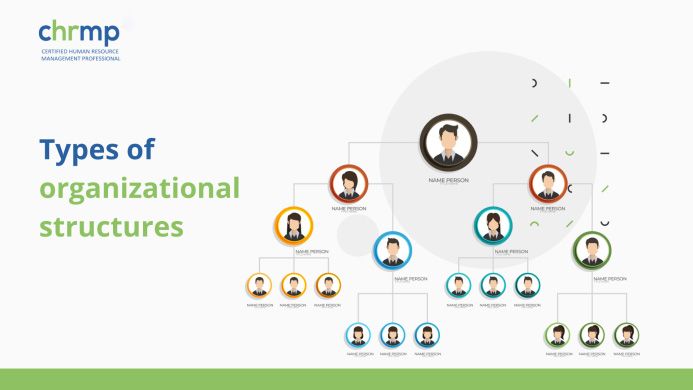

Organizational structure is the framework that outlines how activities and tasks will be coordinated and controlled within a company or an organization.
It’s a crucial element that defines the division of labour, how power is distributed, and how communication and resources flow within the organization.
There is no one-size-fits-all organizational structure or any organizational structure that will do good for all businesses, as the needs and goals of each organization may vary, and there are various types of organizational structures to choose from.
In this blog, we will explore the different types of organizational structures commonly used by business organizations and their advantages and disadvantages.
If you’re a business owner, manager, or employee, understanding the different types of organizational structures will help you make informed decisions and navigate your organization’s operations more effectively.
Let’s dive into the fascinating world of organizational structures and explore the various types of organizational structures.
Organizational structure refers to an organization’s formal system of authority, communication, roles, and responsibilities. It defines the division of labour, coordination and control to achieve the organization’s goals and objectives.
There are several different types of organizational structures. Depending on the size and type of organization, its industry, and its goals and strategies, there can be many kinds of organizational structures.
Some common types of organizational structures, such as hierarchical, matrix, flat, and network structures, have been mentioned below.
A clear chain of command defines the hierarchical structure with a single leader at the top and multiple layers of subordinates below. While in a matrix structure, employees report to functional and project managers, creating dual reporting lines.
In a flat structure, there are few or no levels of management, and employees have more autonomy and decision-making power.
In a network structure, the organization is formed around a group of independent units or partners who work together to achieve common goals.
Choosing the right one among the several different types of organizational structures is essential for the success of any organization, as it impacts communication, decision-making, authority, employee morale and also the company’s financial metrics.
Organizational structure should be aligned with the organization’s goals and strategies and flexible enough to adapt to changes with business expansion.
The organizational structure facilitates a lot of functions:
The organizational structure defines the roles and responsibilities of each employee within the organization, ensuring that everyone understands their job duties and the reporting hierarchy.
This clarity promotes productivity and efficiency as the employees know what is expected of them.
Organizational structure provides a framework for communication and the flow of resources within the organization.
It defines reporting lines, channels of communication and resources and decision-making processes.
Clear communication ensures that everyone is working towards the same goals and reduces the likelihood of misunderstandings and conflicts.
A well-defined organizational structure provides a clear path for decision-making.
It clarifies who has the authority to make decisions, who needs to be consulted, and who needs to be informed at the same time, who is accountable for those decisions and their repercussions.
This helps to streamline decision-making and ensures that decisions are made in a timely and effective manner.
Organizational structure enables the management to identify overlap and duplication of effort and eliminate them.
This helps streamline processes and reduce costs, making the organization more efficient and effective, thereby affecting the organization’s bottom line more healthily.
A strong organizational structure enables organizations to adapt to changing business environments, such as growth or expansion.
It provides a framework for scaling up operations, ensuring sustenance, and the organization can continue to function effectively as it grows.
To conclude, organizational structure plays a crucial role in the success of an organization. It helps to clarify roles and responsibilities, facilitate communication and flow of resources and decision-making, promote efficiency, and support growth and expansion.
Organizational structure refers to the formal system of authority, communication, flow of resources, channels, roles, and responsibilities within an organization.
There are many types of organizational structures. Organizations can adopt a feasible structure depending on their size, industry, and goals.
Below, we have listed the ten most common types of organizational structures and their characteristics:
A hierarchical organizational structure has a clear chain of command with a single leader at the top and multiple layers of subordinates below.
Each layer of management has a specific role and set of responsibilities, with decisions and directives flowing downward from the top.
This structure ensures that employees clearly know their roles and responsibilities and the reporting lines.
Government agencies and military organizations generally adopt this kind of organizational structure, which require a higher degree of control and coordination and are usually very large scale.
This kind of organizational structure can also be inflexible and slow to adapt to changes due to expansion and growth, making it less suitable for smaller organizations.
Benefits:
Disadvantages:
In a flat structure, there are few or no levels of management between the executive level and the staff, and employees have more autonomy and decision-making power.
This structure can lead to streamlined communication, increased collaboration, and reduced bureaucracy.
However, it may also result in a lack of hierarchy, no clear career progression or advancement through the ranks, and a risk of burnout.
Benefits:
Disadvantages:
In a matrix structure, there is a dual line for reporting where employees report to functional and project managers.
This structure allows for better communication, efficient use of resources, and greater job satisfaction.
However, it can also result in role confusion, increased conflicts, and difficulty in decision-making.
Benefits:
Disadvantages
In a network structure, the organization is formed around a group of independent units or partners who work together to achieve common organizational goals.
There is greater flexibility, cost reduction, and specialization in this kind of network, but it can also result in no clear chain of command, limited control, and communication issues.
Benefits:
Disadvantages:
The organization is divided into self-contained units, each with its own functional areas, such as finance, marketing, and operations, in a divisional kind of structure.
This structure allows for decentralization, effective resource allocation, and clear goals and objectives. However, it may also result in duplication of functions, poor communication, and limited cooperation.
Benefits:
Disadvantages:
The organization is formed around self-managed teams with a high degree of autonomy and decision-making power in a team-based structure.
Improved communication, shared responsibility, and better productivity are key features of this kind of organizational structure. However, it can also result in a risk of groupthink, lack of hierarchy, and limited oversight.
Benefits:
Disadvantages:
There is no clear hierarchy in a circular structure, and all employees have equal status and decision-making power.
There is equal opportunity, collective decision-making, and increased collaboration for all. However, it can also result in no clear leadership, risk of inefficiency, and limited accountability.
Benefits:
Disadvantages:
Holacratic structure allows decision-making power to be distributed throughout the organization, with different teams responsible for making decisions.
Flexibility, decentralization, and reduced bureaucracy can also result in complexity, resistance to change, and limited supervision.
Benefits:
Disadvantages:
Hybrid structure combines multiple structures to meet the organization’s needs.
In this kind of structure, there’s customization, greater flexibility, and improved communication on a bigger scale, but it can also result in complexity, resistance to change, and limited control.
Benefits:
Disadvantages:
The circular network structure is characterized by no clear hierarchy, where employees work together in self-organizing teams resulting in reduced bureaucracy, flexibility, and effective collaboration.
But it can also result in limited accountability, risk of inefficiency, and conflicting interests.
Benefits:
Disadvantages:
1.What is a flat organizational structure?
A flat organizational structure is one where there are few or no levels of management between the executive level and the staff level. A lack of hierarchy, streamlined communication, and greater employee autonomy and decision-making power characterizes this type of structure.
2.What is a matrix organizational structure?
A matrix organizational structure is one where employees report to both functional and project managers, creating dual reporting lines. This structure allows for better communication, efficient use of resources, and greater job satisfaction.
3.What is a divisional organizational structure?
A divisional organizational structure is one where the company is divided into self-contained units, each with its own functional areas, such as finance, marketing, and operations. This structure allows for decentralization, effective resource allocation, and clear goals and objectives.
4.What is a network organizational structure?
A network organizational structure is one where the organization is formed around a group of independent units or partners who work together to achieve common goals. This structure allows for greater flexibility, cost reduction, and specialization.
5.What is a team-based organizational structure?
A team-based organizational structure is one where the organization is formed around self-managed teams with a high degree of autonomy and decision-making power. This structure can improve communication, shared responsibility, and better productivity.
To summarize, organizational structure is a crucial aspect of any company on which rests the success or failure of the organization to a great extent.
It defines the roles, responsibilities, reporting lines, communication and resource flow channels within an organization and influences how employees interact with each other.
There are many types of organizational structures. The hierarchical structure is one of the most common structures. Still, there are other structures such as the matrix, flat, network, divisional, team, circular, holacratic, hybrid, and circular network structures.
Each structure has its advantages and disadvantages, and companies must carefully evaluate the merits and demerits of each type to find the best one suitable to their needs and size.
Selecting the right one from the different types of organizational structures can help a company achieve its goals, enhance communication and collaboration and improve overall performance; in short, make it or break it.
© 2007-2025 CHRMP| All Rights Reserved | Powered by Ripples Learning & Research Private Limited
